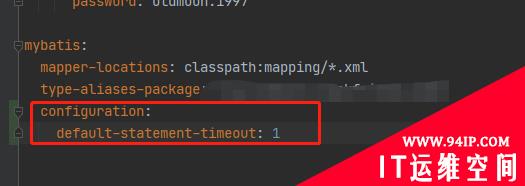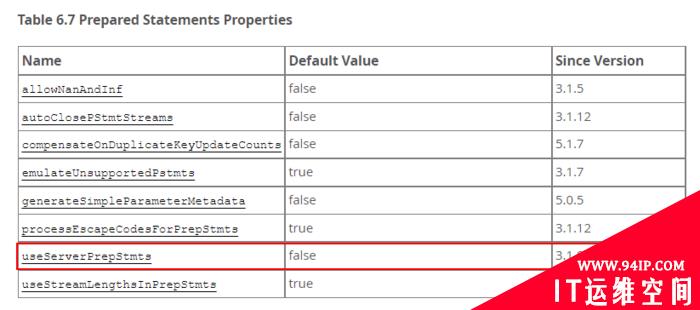如果你是一名音乐发烧友,那么应该知道Flac这种常见的无损音乐格式。Flac音乐文件支持metadata,用户可以编辑metadata,让音乐文件带有艺术家、所属专辑、音轨等等信息。通常来说,metadata和音频数据并不相关,修改metadata并不会影响音频本身。但是,近日微软官方公布了Win10中存在一个Bug,在Win10中用资源管理器修改Flac文件的metadata,竟会导致音频的损坏!

根据Windows Latest的报道,微软最新发布的一份支持文件披露,如果在Win10的2004或者更高版本中,使用文件资源管理器修改Flac音乐文件的metadata,就会损耗Flac音频文件。这个Bug在Win10专业版、家庭版、企业版、工作站版乃至其他版本的Win10中均有出现。
根据微软本月早些时候发布的支持文件,Win10的文件资源管理器导致了这个错误,它破坏了Flac文件头包含的ID3框架也就是metadata,而这个ID3框架负责存储音频的注释,例如音乐标题、艺术家、专辑、曲目编号等。在Win10上,Flac的处理程序忽视了ID3框架,该程序认为Flac文件在使用4字节的文件头,当Flac文件被Win10编辑的时候,ID3框架被覆盖了,导致没有了开始代码,导致了音乐播放器无法识别被修改后的文件。
因此,在Win10中,如果你直接用文件资源管理器修改Flac音乐文件的标题、艺术家等metadata,会导致该文件无法播放。
幸运的是,微软已经确定了Bug的根本原因,用户可以通过Windows Update升级KB5003214补丁进行修复。
在KB5003214补丁中,微软确认了上文提到的错误已经被修复,修改了Flac的标题、艺术家等metadata后,Flac不会再变得无法播放。而对于已经损坏了的Flac文件,微软则发布了一个PowerShell脚本来进行修复,运行该脚本后Flac文件即可重新播放,不过已经从ID3框架中丢失了的metadata信息并不能恢复。
下面是利用PowerShell脚本修复Flac文件的具体方法。
1、开启记事本;
2、复制以下字符,粘贴到记事本中:
#Copyright2021Microsoft
#ThisscriptwillrepairaFLACfilethathasbeencorruptedbyMediaFoundationinreferencetoKB5003430.
#RefertoKB5003430forfurtherinformation
param(
[parameter(Mandatory=$true,
HelpMessage="ThepathtotheFLACfilethathasbeencorruptedbyMediaFoundation",
ValueFromRemainingArguments=$true)]
[ValidateScript({-not[String]::IsNullOrEmpty($_)-and(Test-Path$_)})]
[String]$File
)
#Weneedtobackupthecurrentfileincasewehaveanyerrors
$FileDirectory=Split-Path-Resolve$File
$Filename=Split-Path-Leaf-Resolve$File
$FullPath=Join-Path-Resolve$FileDirectory$Filename
$Filename=[String]::Format("Backup_{0:yyyyMMdd_hhmmss}_{1}",[DateTime]::Now,$Filename)
$BackupLocation=Join-Path$FileDirectory$Filename
Write-Output"MicrosoftFLACRepairTool.ThistoolwillrepairaFLACaudiofilethatwascorruptedwheneditingitsdetails."
Write-Output"AffectedFile:$FullPath"
Write-Output"Abackupofthefilewillbemade:$BackupLocation"
Write-Output"Doyouwishtocontinue?"
$choice=$host.ui.PromptForChoice("FixingFLACScript","Doyouwishtocontinue",('&Yes','&No'),1)
functionParseStreamInfoMetadataBlock([System.IO.FileStream]$stream)
{
$blockType=$stream.ReadByte()
$lastBlock=($blockType-shr7)-ne0
$blockType=$blockType-band0x7F
if($blockType-ne0)
{
return$false
}
$blockSize=(($stream.ReadByte()-shl16)-bor($stream.ReadByte()-shl8)-bor$stream.ReadByte())
if($blockSize-lt34)
{
return$false
}
$minAudioBlockSize=($stream.ReadByte()-shl8)-bor$stream.ReadByte()
$maxAudioBlockSize=($stream.ReadByte()-shl8)-bor$stream.ReadByte()
if($minAudioBlockSize-lt16-or$maxAudioBlockSize-lt16)
{
return$false
}
$minFrameSize=(($stream.ReadByte()-shl16)-bor($stream.ReadByte()-shl8)-bor$stream.ReadByte())
$maxFrameSize=(($stream.ReadByte()-shl16)-bor($stream.ReadByte()-shl8)-bor$stream.ReadByte())
$sampleInfo=(($stream.ReadByte()-shl24)-bor($stream.ReadByte()-shl16)-bor($stream.ReadByte()-shl8)-bor$stream.ReadByte())
$sampleRate=$sampleInfo-shr12
$channelCount=(($sampleInfo-shr9)-band0x7)+1
$bitsPerSample=(($sampleInfo-shr4)-band0x1F)+1
[UInt64]$sampleCount=(($stream.ReadByte()-shl24)-bor($stream.ReadByte()-shl16)-bor($stream.ReadByte()-shl8)-bor$stream.ReadByte())
$sampleCount=(([UInt64]$sampleInfo-band0xF)-shl32)-bor$sampleCount
$MD5HashBytes=New-Objectbyte[]16
$stream.Read($MD5HashBytes,0,$MD5HashBytes.Length)
$MD5Hash=[Guid]($MD5HashBytes)
if($sampleRate-eq0)
{
return$false
}
#Passingthesechecksmeansthatwelikelyhaveastreaminfoheaderandcanrebuildthefile
Write-Output"FileStreamInformation"
Write-Output"SampleRate:$sampleRate"
Write-Output"AudioChannels:$channelCount"
Write-Output"SampleDepth:$bitsPerSample"
Write-Output"MD5AudioSampleHash:$MD5Hash"
return$true
}
if($choice-eq0)
{
Copy-Item$FullPath-Destination$BackupLocation-Force
$stream=[System.IO.File]::Open($FullPath,[System.IO.FileMode]::Open)
$stream.Seek(4,[System.IO.SeekOrigin]::Begin)
while($stream.ReadByte()-eq0){}
#WenowneedtofigureoutwhereavalidFLACmetadataframebegins
#Wearelikelypointingtothelastbyteofthesizemembersowe'llseekback4bytesandretry
$flacDataStartPosition=$stream.Position-4
$stream.Seek($flacDataStartPosition,[System.IO.SeekOrigin]::Begin)
while(-not(ParseStreamInfoMetadataBlock($stream)))
{
$flacDataStartPosition=$flacDataStartPosition+1
$stream.Seek($flacDataStartPosition,[System.IO.SeekOrigin]::Begin)
}
#Insertthestartcode
$stream.Seek($flacDataStartPosition,[System.IO.SeekOrigin]::Begin)
if(Test-Path"$FullPath.tmp")
{
Remove-Item"$FullPath.tmp"
}
$fixedStream=[System.IO.File]::Open("$FullPath.tmp",[System.IO.FileMode]::CreateNew)
[byte[]]$startCode=[char[]]('f','L','a','C');
$fixedStream.Write($startCode,0,$startCode.Length)
$stream.CopyTo($fixedStream)
$stream.Close()
$fixedStream.Close()
Move-Item-Force"$FullPath.tmp"$FullPath
}
3、保存文件,在“另存为”对话框中,将目录定位到你想要保存PowerShell脚本的位置;
4、在文件名输入框中,输入“FixFlacFiles.ps1”,将另存为文件的类型更改为Text Documents (*.txt);
5、进入到你保存该PowerShell脚本的目录;
6、右键点击刚刚保存的脚本,然后选择“使用PowerShell运行”;
7、出现提示时,输入无法播放的Flac文件的文件名,然后按下回车键。
微软建议大家安装本月推送的可选累积更新,以避免修改Flac文件metadata出现的问题。
转载请注明:IT运维空间 » 运维技术 » Windows 10竟会损坏用户文件?教你解决这个Bug

![[Oracle]复习笔记-SQL部分内容](/zb_users/upload/2023/02/25/20230213095820-63ea09bc55070.jpg)








![[ORACLE]查看SQL绑定变量具体值 查看SQL绑定变量值](https://94ip.com/zb_users/theme/ydconcise/include/random/7.jpg)











发表评论